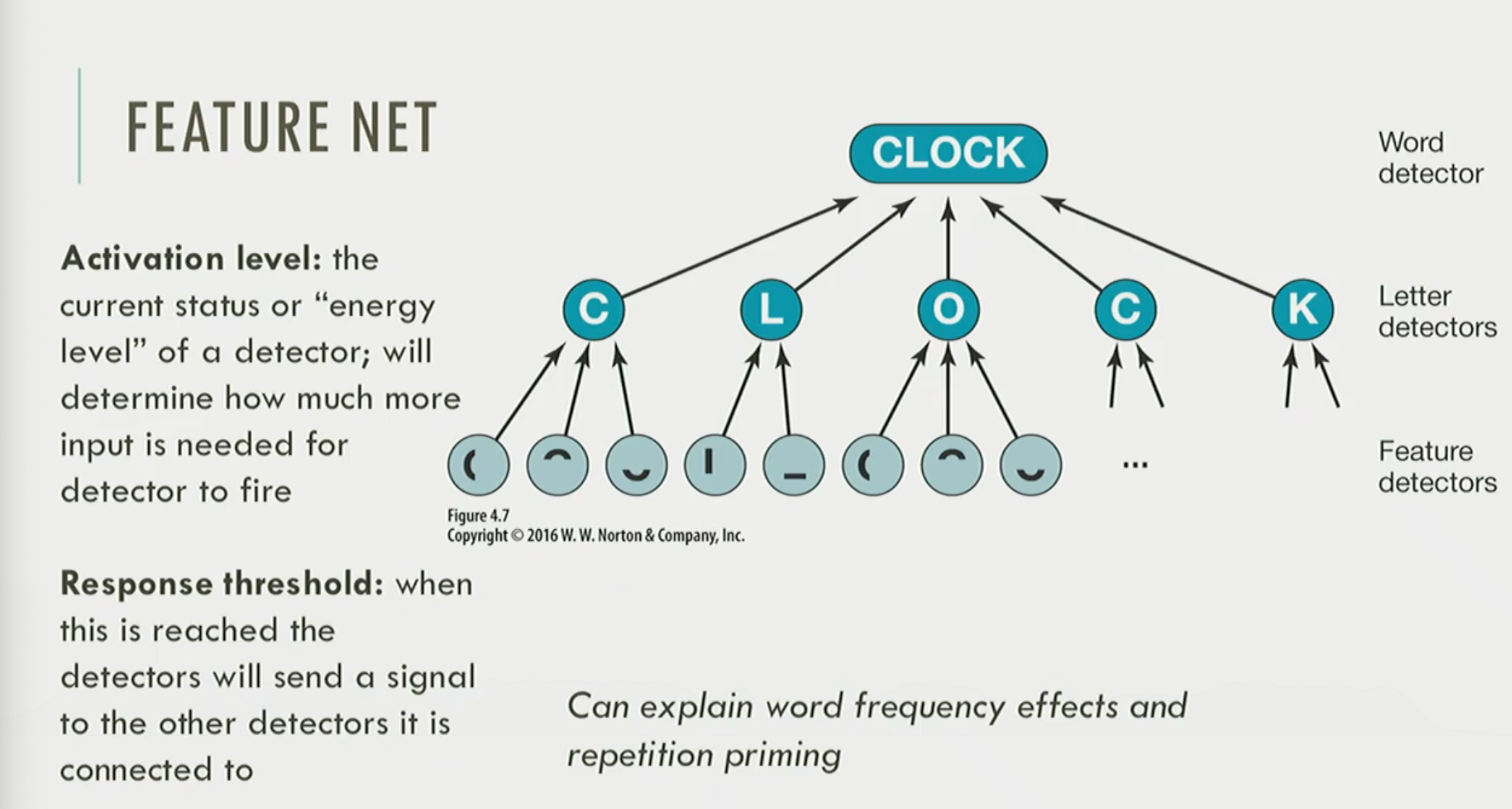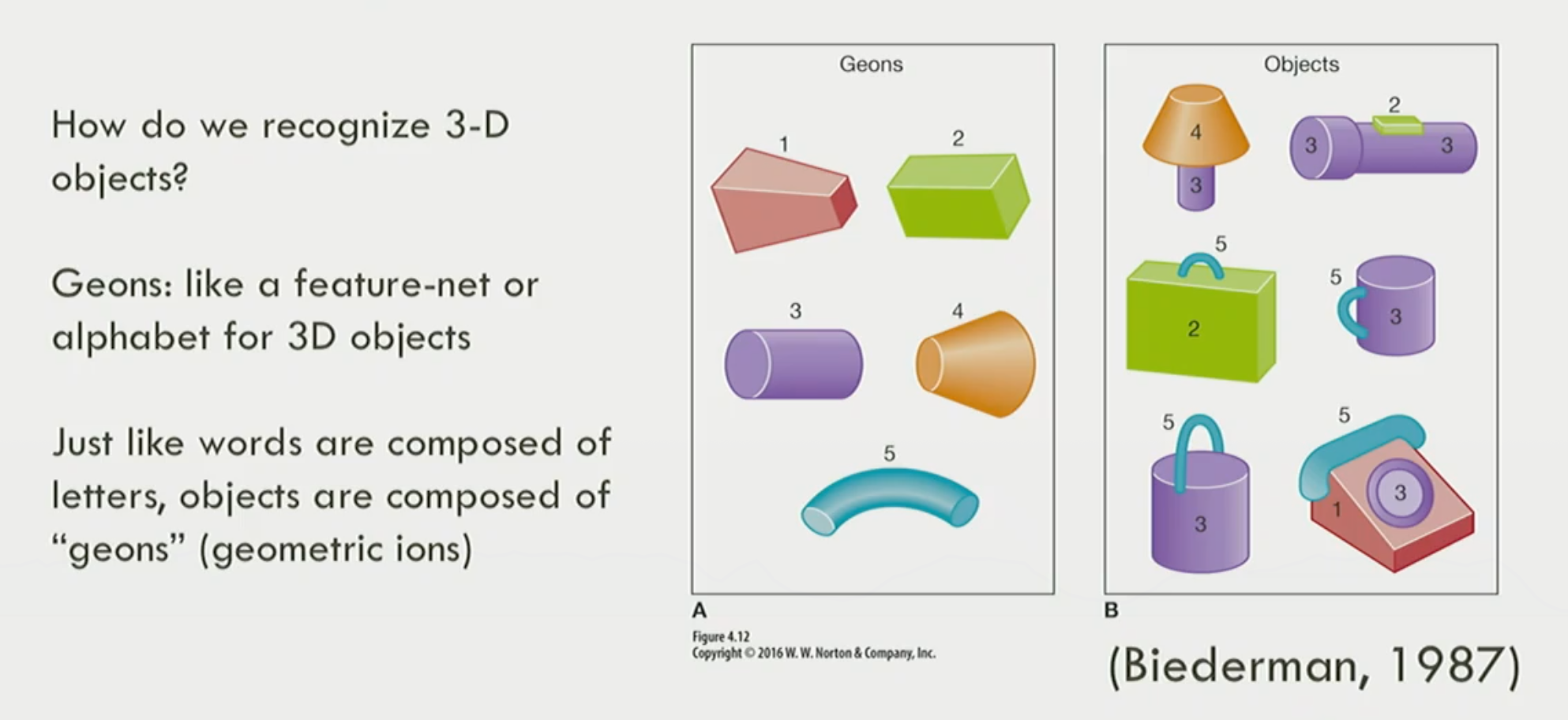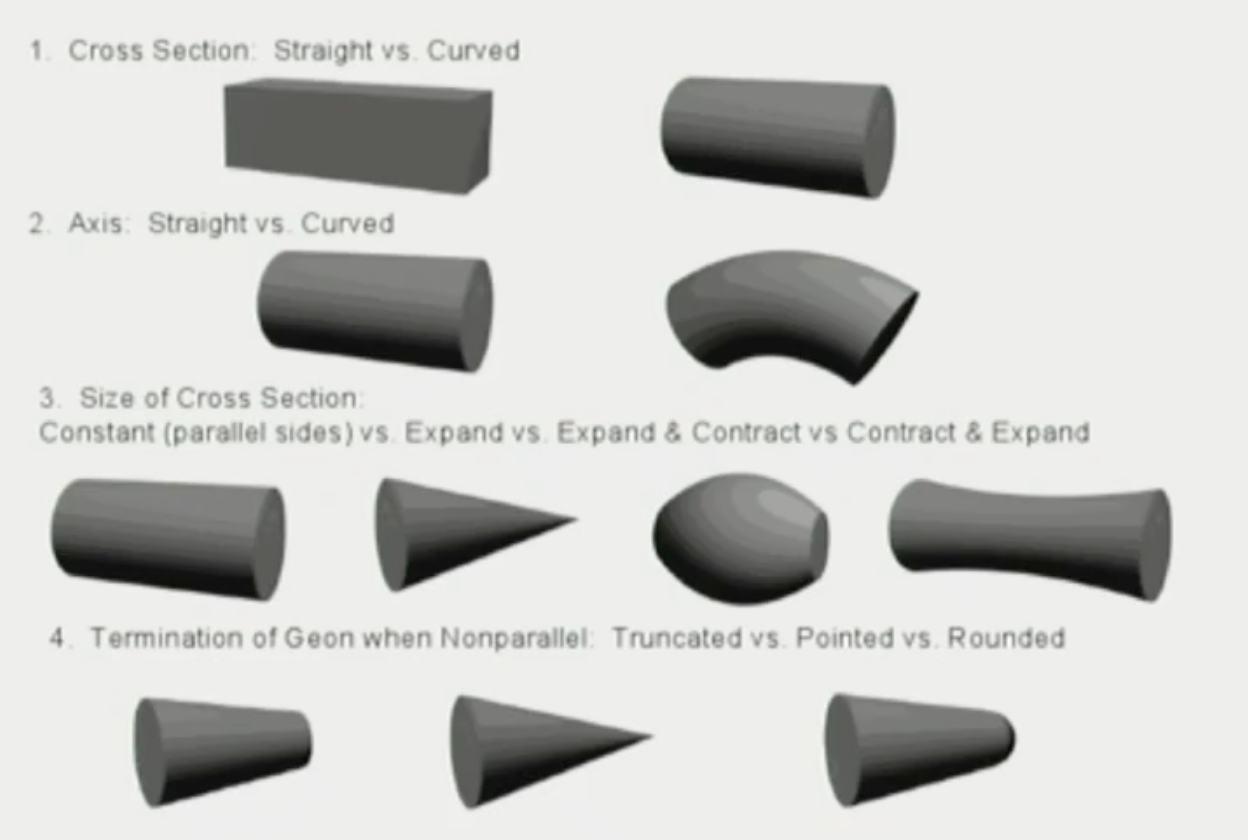Andyʼs working notes
About these notesCOGS 101B - Lecture 10 - Knowledge shapes perception
This lecture introduces a “feature net” which might explain some details of the word superiority effect described in COGS 101B - Lecture 8 - Perception. Word recognition might work roughly like a neural net:
Recently seen and commonly used words might have a higher activation level, explaining why they produce a stronger word superiority effect. A more complex model involving bigram detectors might explain why “well-formed” words like “HICE” are recognized more easily than “HRQE.”
Likewise, our perception of 3D objects seem to chunk via roughly {36} “{geons}” which have the key property of {viewpoint-independence} (Biederman, 1987). This theory is called {recognition by components}.

Viewpoint-dependent recognition, by contrast, depends on matching perception with some holistic representation in memory. We can tell when this is happening if recognition is faster for common viewing angles than for uncommon ones. We engage in this type of recognition, too.